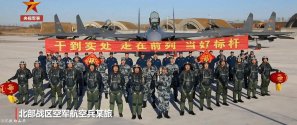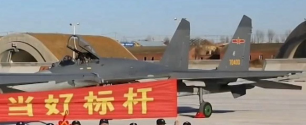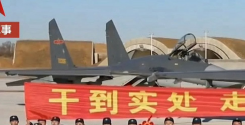J-11/A really were very much like the original Su-27s except for ability to fire R-77s and maybe some minor avionics upgrade or using more composites. I think they are going to start retiring them in the next few years. J-11B is the major change to use mostly domestic systems and utilize all of China's AAMs. They are the first ones to get WS-10 series engine. Their ground attack capabilities is probably limited like J-10A.
I think all the work devoted to "J-11D" is really to test out the subsystems needed to eventually upgrade J-11B to using more modern avionics and missiles. It really doesn't make sense to produce pure air superiority version of J-11s at this point. Since there is still a lot of time left in the air frame, it makes sense to keep them around probably into the 2030s. It's worth upgrading all of them to more modern standard. J-11Ds don't make a lot of sense when J-16 program has been such a success. Since flankers future in PLA is a multi-role aircraft, two seat versions make a lot more sense than single seaters. A lot of the attack duties for PLAAF/PLANAF still fall on the shoulders of JH-7/A. Over time, they will start retiring the original JH-7s first and followed by JH-7As. That along with the increasing numbers of J-20s point to a transition of J-16s to more attacking roles. They will be around until probably 2040s at least. After all, USAF intends to keep F-15Es around until 2050. There is no reason for PLAAF to retire J-16s sooner.
I did a rough count right now based huitong's site and scramble. I think there have probably been about 250 J-11B/BS produced over its lifetime. I also counted around 160 to 170 J-16s based on huitong's gallery and scramble. Scramble does point to 2 additional brigade without photos on huitong's page. I would attribute that to newer brigade that have not been captured on photos yet. I could see a little over 200 J-16s right now in service based on units that have not been photographed yet. If J-16 production goes on for another 5 years, we could be looking well over 300 J-16s by the end. They have probably been producing 30 to 40 domestic flankers a year since 2010 if we also include the J-15s. If we include all the J-15 programs, we are probably looking at 700 domestic flankers when is finished. That's quite a successful program.
Back in 2007, I always thought it was more likely that J-10 production would far exceed flanker series. That's what all the online Chinese sources suggested. It's quite interesting that we will probably end up with more J-11B/15/16s than J-10s. That really does speak for the success of the J-20 program. Maybe also the versatility of flankers. Or maybe SAC not being as successful with 5th gen program as SAC.
I think you may be missing the biggest contributing factor to this shift in the hi-lo mix, which probably have nothing to do with the specific capabilities and merits of the airframes themselves - the changing strategic picture.
When the J10 was introduced, the plan was to fight over or close to the mainland shores. The PLAAF at the time had limited or even no ambition for sustained combat operations further from home as such aspirations would have been deemed wholly unattainable at the time. In addition, the J10 was designed to fight enemy aircraft with superior tech and weapons, as can be seen from its limited munitions load. Back in the 90s, it would have been considered a massive success if a J10 could kill an enemy in BVR and another in WVR before dying, as the PLAAF would have been happy with an even exchange rate against enemy fighters. As such, being able to carry a dozen+ AAMs was not really a capability the PLA really expected to realistically need.
These days, I think the operational requirements and expected primary battlespace has shifted significantly outwards, where the PLAAF is no longer looking to be fighting foreign assets over the Easter Chinese coast, but rather the decisive battles are now expected to be fought over water in the east and south China seas, as such I think the J10 has fallen out of favour due to range and payload considerations.



